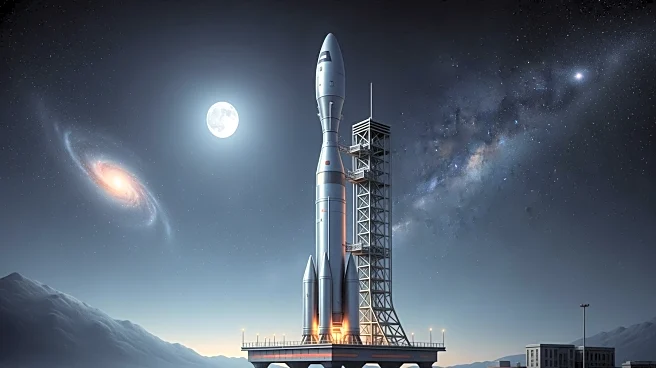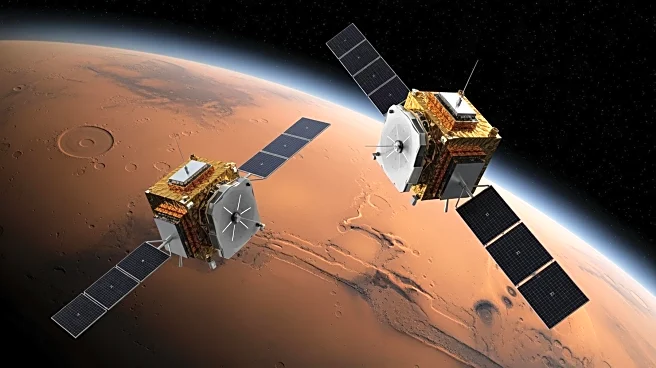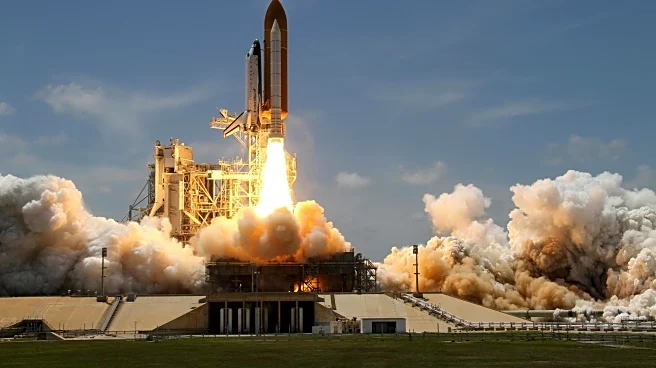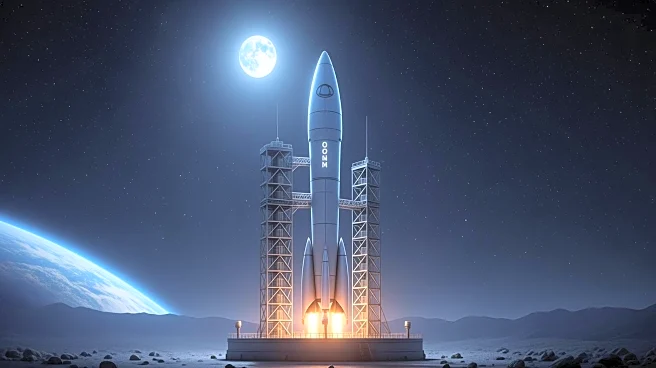What's Happening?
NASA's Escapade mission, a collaboration with UC Berkeley and Blue Origin, is set to launch two orbiters to Mars using Blue Origin's New Glenn rocket. Scheduled for liftoff on November 4, the mission aims
to deploy the orbiters, named Blue and Gold, to study the Martian magnetosphere. The orbiters will initially remain at the L2 Earth-Sun Lagrange point for a year before heading to Mars, expected to arrive by November 2027. This mission marks Blue Origin's first official space mission and a significant step in reducing the cost of Mars exploration, with a budget under $80 million.
Why It's Important?
The Escapade mission represents a milestone in cost-effective space exploration, potentially paving the way for more frequent and affordable missions to Mars. By utilizing Blue Origin's New Glenn rocket, NASA aims to demonstrate the viability of reusable launch vehicles, which could significantly lower the cost of space travel. The mission's success could enhance scientific understanding of Mars' magnetosphere, providing insights into the planet's history and its potential for future human exploration. The collaboration highlights the growing role of private companies in space exploration, alongside traditional government agencies.
What's Next?
Following the launch, the orbiters will spend a year at the L2 Earth-Sun Lagrange point before proceeding to Mars. The mission's success could lead to more collaborations between NASA and private companies like Blue Origin, potentially increasing the frequency of Mars missions. The data collected by the orbiters will be crucial for understanding the Martian magnetosphere, influencing future exploration strategies. Blue Origin's performance in landing the New Glenn rocket will be closely watched, as successful reuse could position the company alongside SpaceX in the commercial space launch market.
Beyond the Headlines
The Escapade mission underscores the challenges of conducting interplanetary missions on a limited budget, highlighting the innovative approaches required to overcome financial and logistical hurdles. The mission's focus on the Martian magnetosphere could have broader implications for understanding planetary atmospheres and their evolution. Success in this mission could inspire further investment in space exploration technologies, potentially accelerating the timeline for human missions to Mars.












